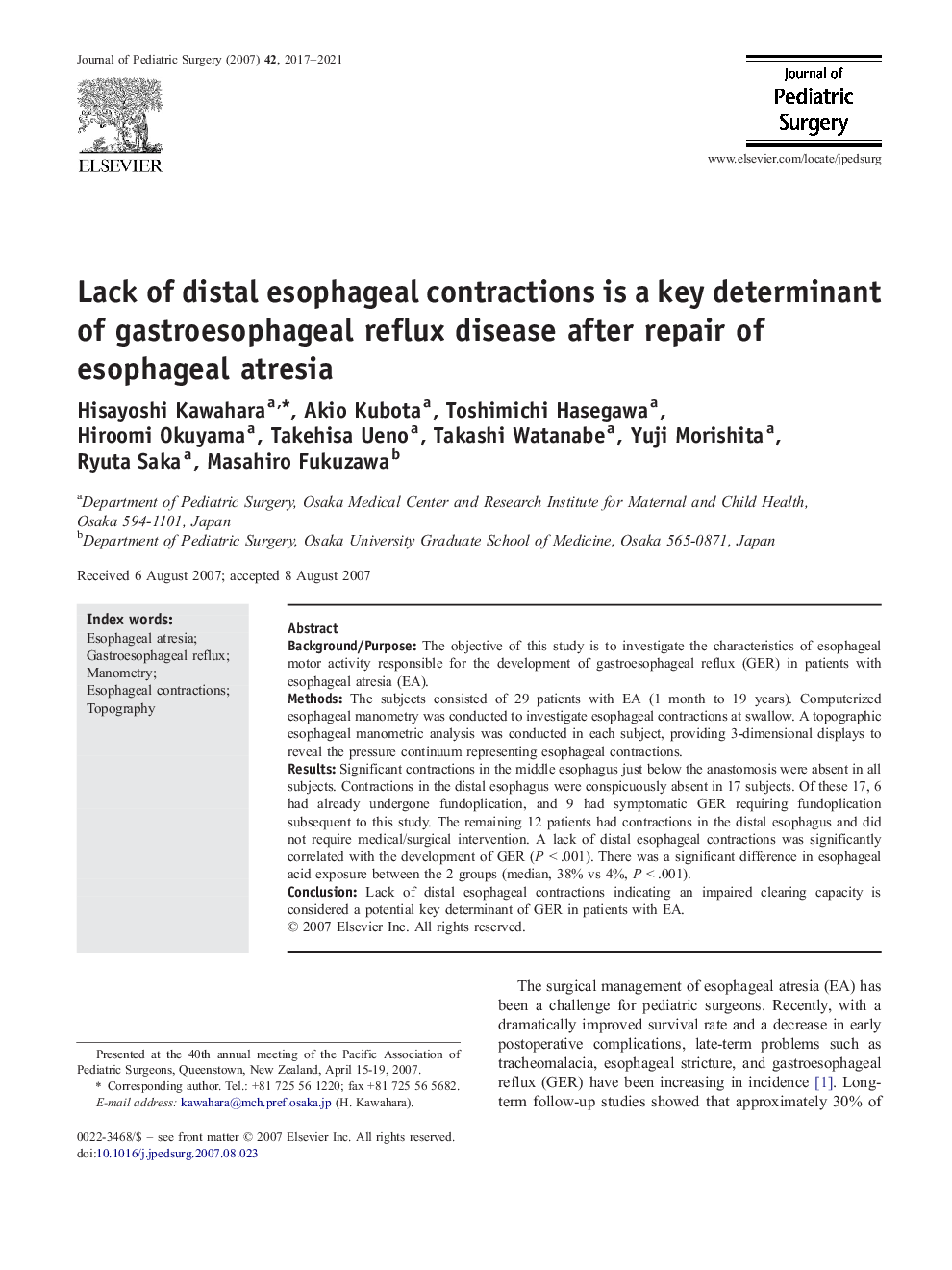| Article ID | Journal | Published Year | Pages | File Type |
|---|---|---|---|---|
| 4159994 | Journal of Pediatric Surgery | 2017 | 5 Pages |
Background/PurposeThe objective of this study is to investigate the characteristics of esophageal motor activity responsible for the development of gastroesophageal reflux (GER) in patients with esophageal atresia (EA).MethodsThe subjects consisted of 29 patients with EA (1 month to 19 years). Computerized esophageal manometry was conducted to investigate esophageal contractions at swallow. A topographic esophageal manometric analysis was conducted in each subject, providing 3-dimensional displays to reveal the pressure continuum representing esophageal contractions.ResultsSignificant contractions in the middle esophagus just below the anastomosis were absent in all subjects. Contractions in the distal esophagus were conspicuously absent in 17 subjects. Of these 17, 6 had already undergone fundoplication, and 9 had symptomatic GER requiring fundoplication subsequent to this study. The remaining 12 patients had contractions in the distal esophagus and did not require medical/surgical intervention. A lack of distal esophageal contractions was significantly correlated with the development of GER (P < .001). There was a significant difference in esophageal acid exposure between the 2 groups (median, 38% vs 4%, P < .001).ConclusionLack of distal esophageal contractions indicating an impaired clearing capacity is considered a potential key determinant of GER in patients with EA.
